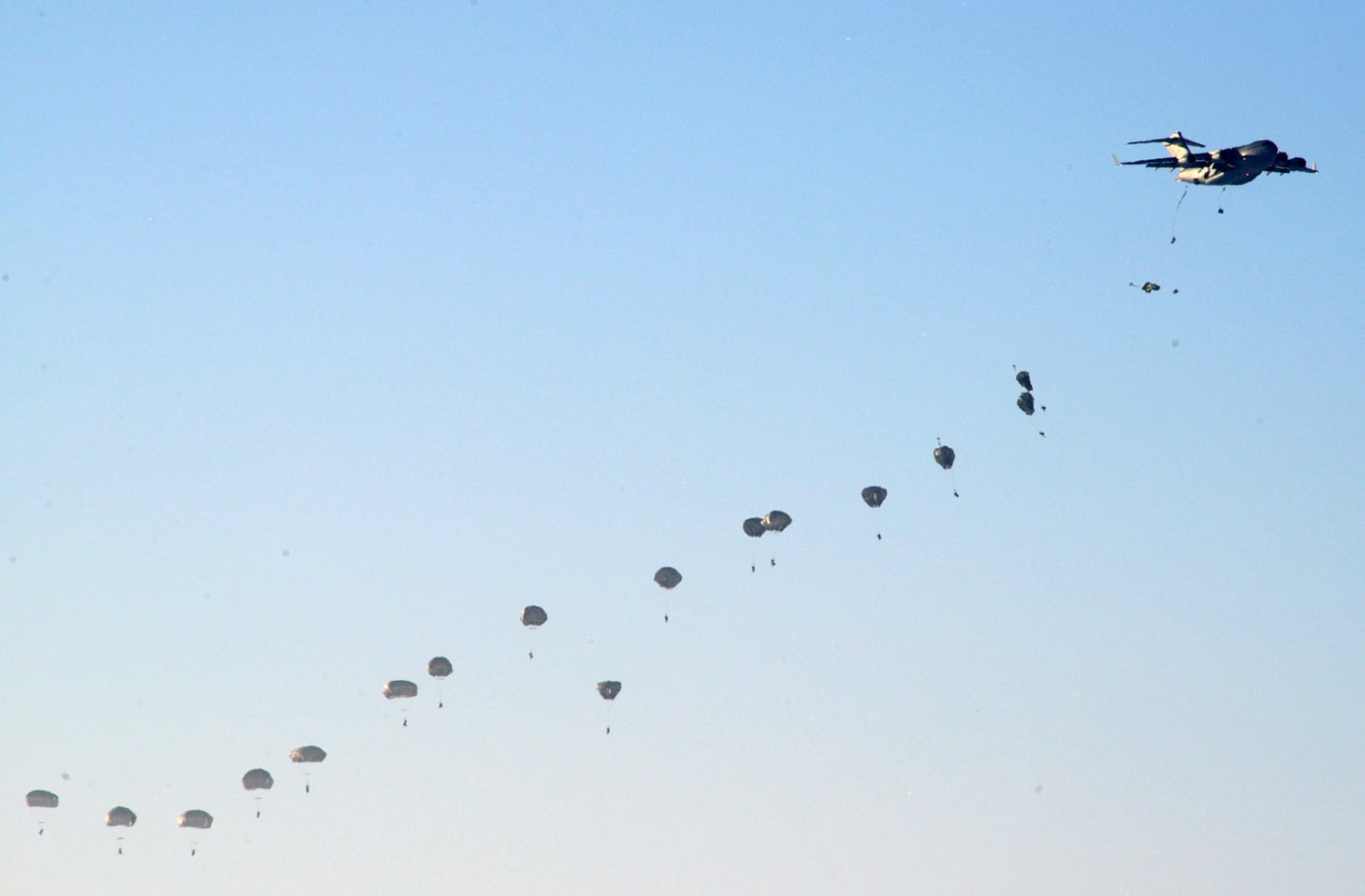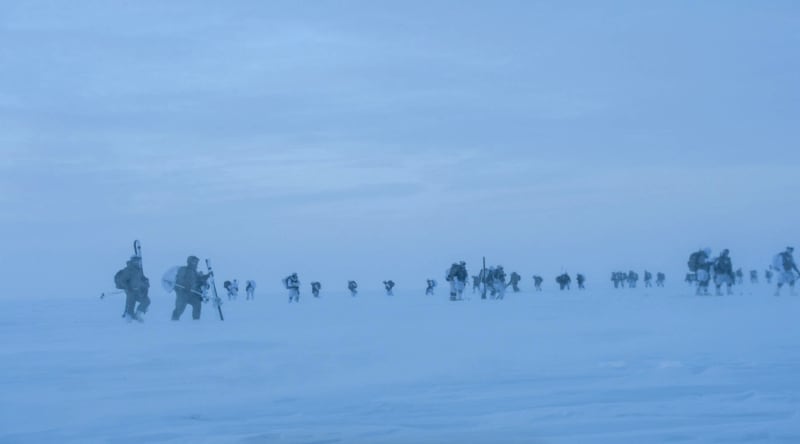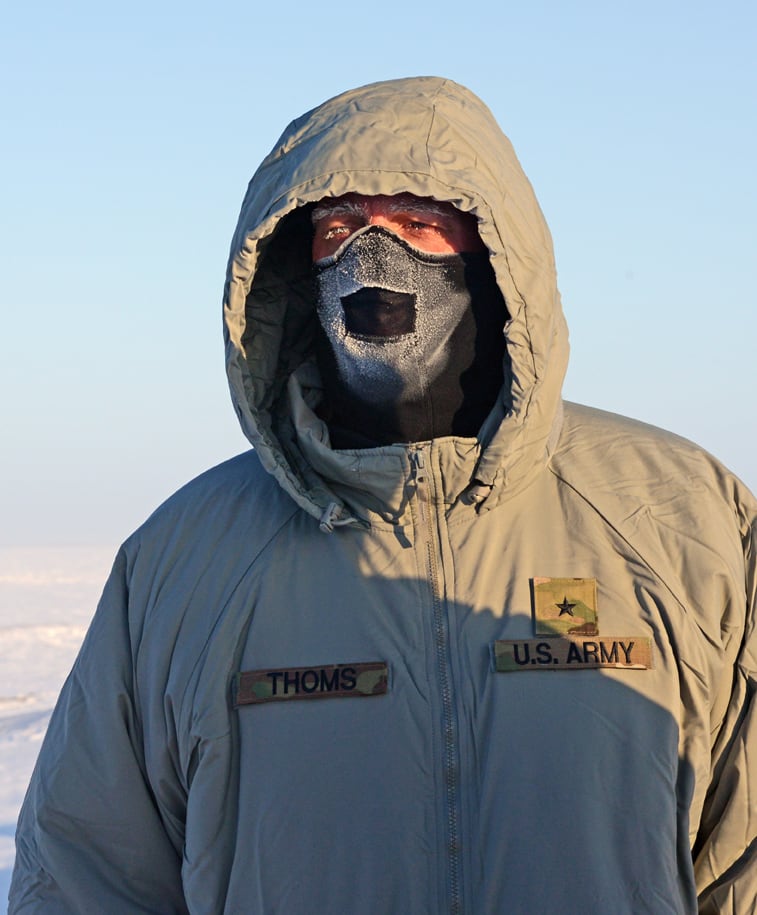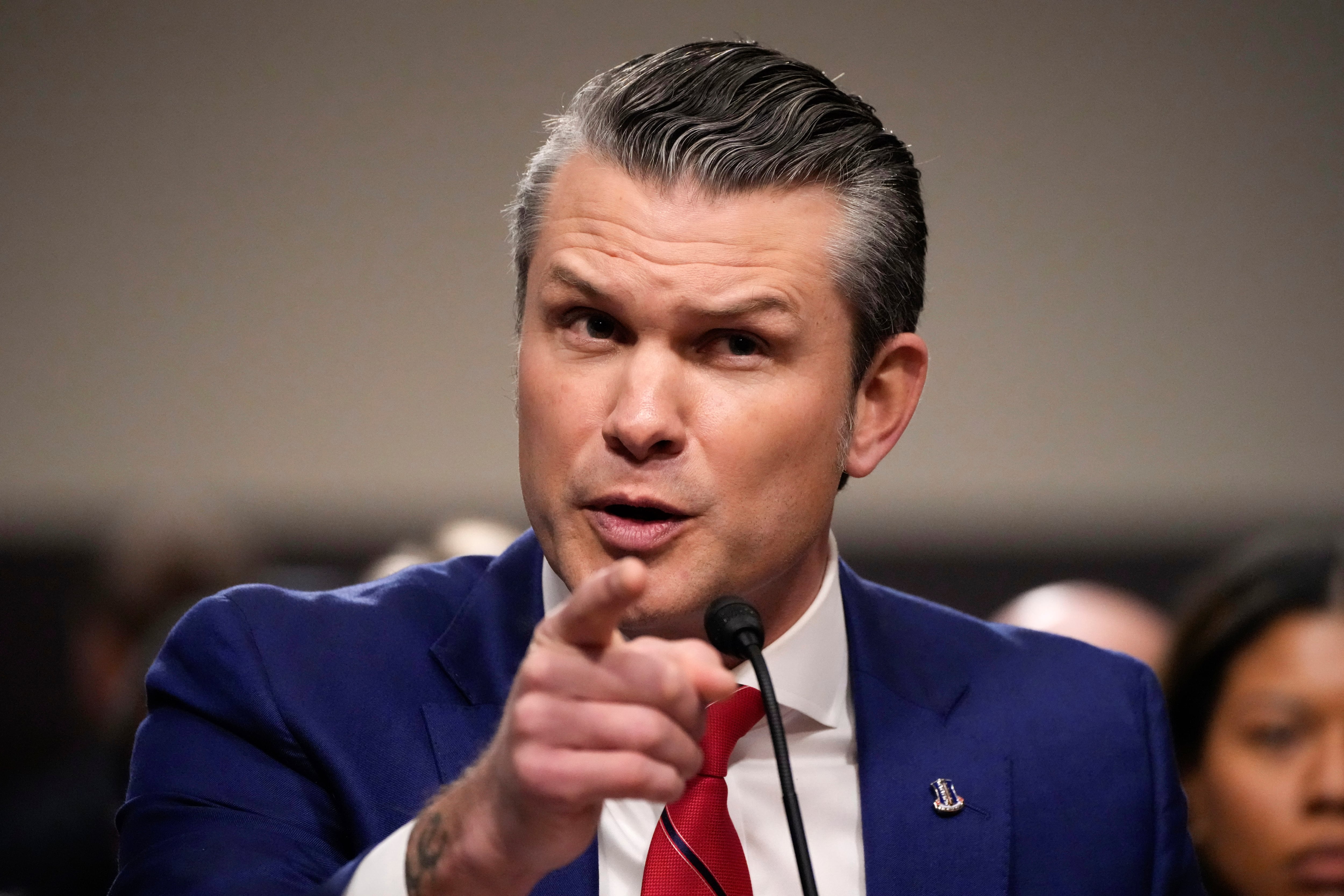It was 60 degrees below zero with wind chill on the ramp of the C-130, but that was not going to stop the Army's paratroopers from jumping out over Deadhorse, Alaska.
On Wednesday, 150 paratroopers from U.S. Army Alaska's 1st Squadron, 40th Cavalry Regiment participated in Spartan Pegasus — the exercise's third iteration, but the second time for this squadron.
Spartan Pegasus — the largest U.S. airborne operation north of the Arctic Circle in more than a decade — trains soldiers on how to move and operate across frozen terrain and demonstrates the Army's ability to operate in such extreme conditions. Air Force C-130s and C-17s from Hawaii and Arkansas, and CH-47 Chinooks and Strykers from Fort Wainwright, Alaska, also were involved in the exercise.
The paratroopers from Joint Base Elmendorf-Richardson in Anchorage were tasked with retrieving a crashed satellite as the exercise's objective. The soldiers moved out in Small Unit Sustainment Vehicles and the Chinooks, while those on skis moved toward the satellite. Others used snowshoes to transport tents and other equipment.

Paratroopers from the Alaska-based 1st Squadron, 40th Cavalry Regiment jumped into Deadhorse, Alaska, on Wednesday.
Photo Credit: David Vergun
Command Sgt. Maj. Evan Lewandowski described the conditions as 100 below with wind chill over the ramp of the C-130s and C-17s. Once troops hit the ground, it warmed up — relatively speaking — to 60 below with wind chill and a foot and a half of snow on the ground.
In that kind of weather, the soldiers wore Arctic mittens, vapor barrier boots, balaclavas over their faces and Arctic goggles to ensure no skin is exposed in such extreme conditions.
Lewandowski said everything struggles in the cold, whether it's troops or equipment.
"It takes a little bit more time to get to what you're doing," he said.

Paratroopers move out on skis and snowshoes after jumping into Deadhorse, Alaska.
Photo Credit: Sgt. Cuong Le/Marine Corps
Lt. Col. Ethan Diven, commander of the 1st Squadron, 40th Cavalry Regiment, said the Arctic is just a change in the conditions or environment.
"We have to do airborne and reconnaissance regardless of where we are," he said. "We just change our uniform posture and how we take our equipment."

Brig. Gen. Lawrence F. "Larry" Thoms, commander of the 311th Signal Command (Theater) and U.S. Army Pacific G-6, watches as 150 paratroopers jump into Deadhorse, Alaska. Troops must make sure very little skin is exposed in such extreme elements.
Photo Credit: David Vergun
The soldiers had to adjust to some changes in the plan.
Batteries die faster in such a cold environment, causing issues with radio operations and communications and delays.
"The original plan was delayed a bit because of the change in wind speed," Diven said.
Lewandowski said quick changes are typical of airborne operations.
"Outside factors will always contribute to operations on the ground," he said. "It's kind of what separates an airborne unit from the rest of the Army."
Charlsy Panzino covers the Guard and Reserve, training, technology, operations and features for Army Times and Air Force Times. Email her at cpanzino@militarytimes.com.
Charlsy is a Reporter and Engagement Manager for Military Times. Email her at cpanzino@militarytimes.com.





